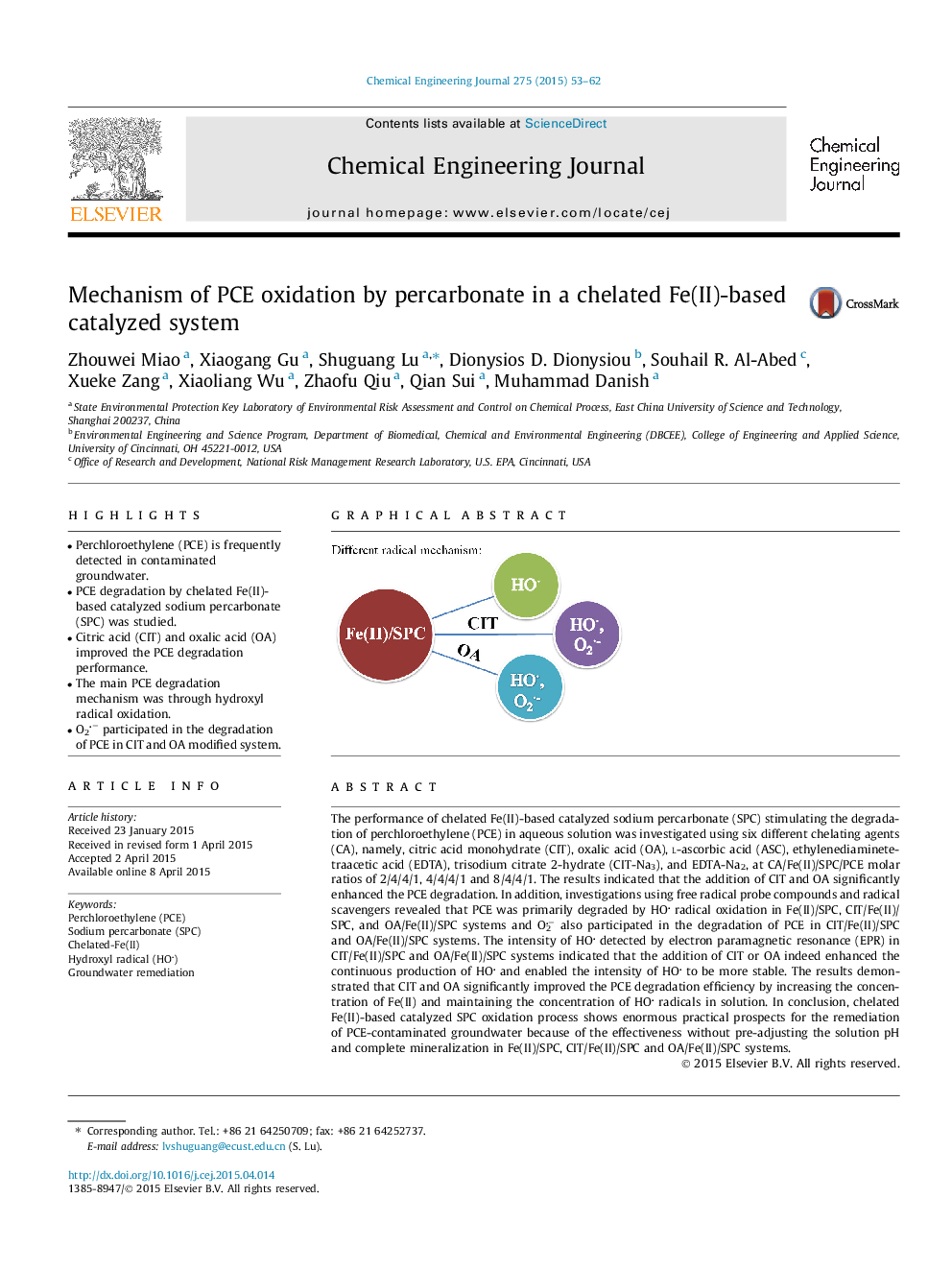| کد مقاله | کد نشریه | سال انتشار | مقاله انگلیسی | نسخه تمام متن |
|---|---|---|---|---|
| 146256 | 456365 | 2015 | 10 صفحه PDF | دانلود رایگان |

• Perchloroethylene (PCE) is frequently detected in contaminated groundwater.
• PCE degradation by chelated Fe(II)-based catalyzed sodium percarbonate (SPC) was studied.
• Citric acid (CIT) and oxalic acid (OA) improved the PCE degradation performance.
• The main PCE degradation mechanism was through hydroxyl radical oxidation.
• O2− participated in the degradation of PCE in CIT and OA modified system.
The performance of chelated Fe(II)-based catalyzed sodium percarbonate (SPC) stimulating the degradation of perchloroethylene (PCE) in aqueous solution was investigated using six different chelating agents (CA), namely, citric acid monohydrate (CIT), oxalic acid (OA), l-ascorbic acid (ASC), ethylenediaminetetraacetic acid (EDTA), trisodium citrate 2-hydrate (CIT-Na3), and EDTA-Na2, at CA/Fe(II)/SPC/PCE molar ratios of 2/4/4/1, 4/4/4/1 and 8/4/4/1. The results indicated that the addition of CIT and OA significantly enhanced the PCE degradation. In addition, investigations using free radical probe compounds and radical scavengers revealed that PCE was primarily degraded by HO radical oxidation in Fe(II)/SPC, CIT/Fe(II)/SPC, and OA/Fe(II)/SPC systems and O2− also participated in the degradation of PCE in CIT/Fe(II)/SPC and OA/Fe(II)/SPC systems. The intensity of HO detected by electron paramagnetic resonance (EPR) in CIT/Fe(II)/SPC and OA/Fe(II)/SPC systems indicated that the addition of CIT or OA indeed enhanced the continuous production of HO and enabled the intensity of HO to be more stable. The results demonstrated that CIT and OA significantly improved the PCE degradation efficiency by increasing the concentration of Fe(II) and maintaining the concentration of HO radicals in solution. In conclusion, chelated Fe(II)-based catalyzed SPC oxidation process shows enormous practical prospects for the remediation of PCE-contaminated groundwater because of the effectiveness without pre-adjusting the solution pH and complete mineralization in Fe(II)/SPC, CIT/Fe(II)/SPC and OA/Fe(II)/SPC systems.
Figure optionsDownload as PowerPoint slide
Journal: Chemical Engineering Journal - Volume 275, 1 September 2015, Pages 53–62